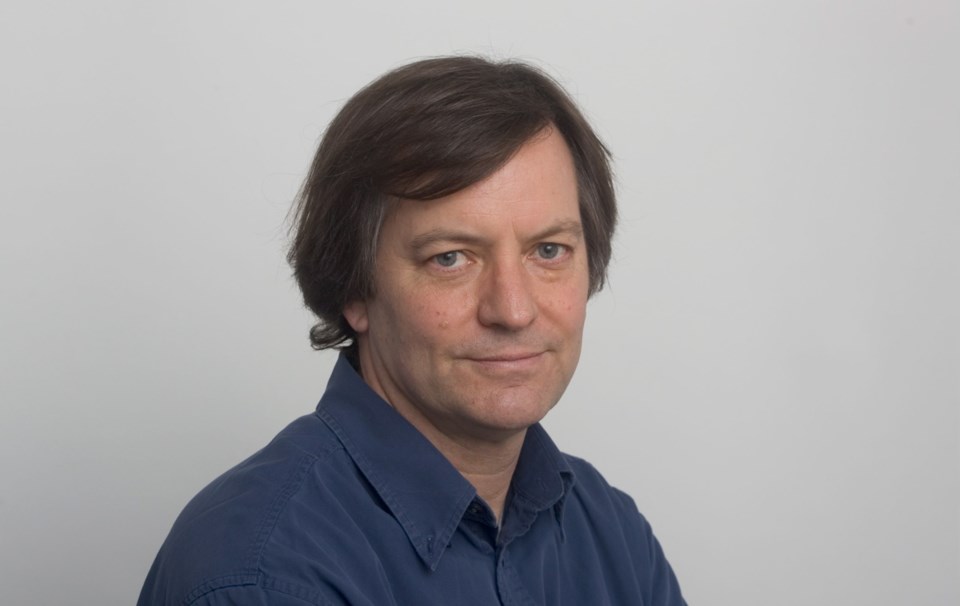 Arthur Pitts is truly one of British ColumbiaŌĆÖs ŌĆ£unheralded artists.ŌĆØ He came here, did good work in hard times, and his artworks were tucked away in storage in the Provincial Archives, never to be heard from again. But an intrepid art historian has now told his story.
Arthur Pitts is truly one of British ColumbiaŌĆÖs ŌĆ£unheralded artists.ŌĆØ He came here, did good work in hard times, and his artworks were tucked away in storage in the Provincial Archives, never to be heard from again. But an intrepid art historian has now told his story.
The new biography of Pitts, by Kerry Mason, is the 10th and last volume in Mother Tongue PublishingŌĆÖs series Unheralded Artists of sa╣·╝╩┤½├Į, and itŌĆÖs a fine conclusion.
Arthur Pitts was born in the south of London in 1889. His family could not afford art training for him, so he was apprenticed as a ŌĆ£show card writerŌĆØ and became a commercial artist. His uncle and aunt had left the economic hard times of England and emigrated to South Africa, and in 1912 Arthur followed them. After two years, he moved on, arriving in Moosomin, Sask., in July 1914, in time to enlist in the Canadian Army.
Mason describes his war service. Pitts was seriously wounded in 1917 and sent back to the hospital at Esquimalt, where he worked at his convalescence and got to like Victoria. There he met and eventually married Margaret McKenzie, whose deep roots on the Saanich Peninsula put him in touch with the Coast Salish people.
Pitts returned to England to study at the Westminster School of Art, and tried to earn a living as a freelance magazine illustrator. Now married to a Canadian, he returned to British Columbia and they travelled extensively in the Interior.
Expanding his document of First Nations subjects, he journeyed to the homelands of the Haida, Tlingit and Tsimshian peoples in 1933. The result was a series of thoughtful and accomplished portraits of native leaders who posed for him with pride. These make a close parallel with the paintings by Emily Carr of about that time.
The artist eked out a living, while he continued with his project. Pitts spent the next two years arranging sittings with the leaders of Tsartlip People near Mount Newton, and then worked in the Kootenay. His portraits ŌĆö half-length or more ŌĆö were clearly the product of co-operation, and usually the sitters were paid. These men and women are presented with a great dignity, and in many cases received a duplicate painting as part of the agreement.
After 1935, Pitts and his wife returned to London, where he pursued his career as a commercial artist. Following the Second World War, he made a significant sale of London scenes and realized enough money to return to sa╣·╝╩┤½├Į.
Living in Saanichton in 1954, Pitts sold 77 of his ŌĆ£Indian collectionŌĆØ of paintings to the Provincial Archives and to the Glenbow Foundation. His paintings were also represented at VictoriaŌĆÖs Norfolk Gallery, and he eventually taught at the associated Norfolk School of Art.
He exhibited and taught art with the Saanich Peninsula Arts and Crafts Society. After his wifeŌĆÖs death in 1959, Pitts remarried and continued to travel and paint until his death in 1972. And at that point, his art career faded into obscurity.
Author Mason spoke to me about her new book on Pitts.
ŌĆ£I couldnŌĆÖt stand the thought of poor Arthur languishing in obscurity any longer,ŌĆØ she said. ŌĆ£He was so modest ŌĆö he never put himself forward.ŌĆØ
MasonŌĆÖs stewardship of the story of Arthur Pitts has been a labour of love. In 1980, she was curator of the Emily Carr Gallery, an adjunct of the Provincial Archives. Preparing an exhibition, she discovered his painting, Saanich Indian Grave, Tsartlip Reserve, sa╣·╝╩┤½├Į (1934). Who is this artist? His story was revealed to her ŌĆ£like a necklace of pearls,ŌĆØ she said.
PittsŌĆÖ second wife, Winnifred, came to the 1980 exhibition and met Mason. Later, Mason was studying for her masterŌĆÖs degree and wanted to do her thesis on something new.
Generously, Winnifred gave her 47 journals written by her husband between 1909 and 1972. Mason deciphered them, copied them and, after presenting her thesis, in 1992 flew to Wales where she passed them to Raymond, ArthurŌĆÖs brother, who was born in 1909. Then, in 1996, MasonŌĆÖs story about Pitts appeared in Beautiful sa╣·╝╩┤½├Į magazine.
Creating books in British Columbia is a challenge, and it was almost 20 years before Mason met the indomitable Mona Fertig from Salt Spring Island. Mason had written the introduction to a biography of Edythe Hembroff-Schliecher published by FertigŌĆÖs Mother Tongue Publishing, and proposed the story of Arthur Pitts. This proved to be perfect as the final book in FertigŌĆÖs Unheralded Artists of sa╣·╝╩┤½├Į series.
PittsŌĆÖ paintings are all watercolours and, compared with the untamed exuberance of Emily CarrŌĆÖs, they seem tame. Yet his superior training and diligence resulted in portraits more accomplished than hers. His were rendered with care, life-sized and in the presence of the sitters.
The respect he showed the Indigenous people is evident, and Mason includes affirmations by some contemporary artists, descendants of the men and women whom Pitts painted dressed in their finest regalia during the 30 years he lived in Saanich.
The two paintings that Mason showed in the exhibition back in 1980 are the only Arthur Pitts paintings I have ever seen. Perhaps some curator will look into this, though itŌĆÖs more likely that issues of colonialism and cultural appropriation will keep these worthy portraits out of sight. Nevertheless, this book places on record the good work of the artist Arthur Pitts.
The Life and Art of Arthur Pitts, by Kerry Mason. Mother Tongue Publishing Ltd., Salt Spring Island, sa╣·╝╩┤½├Į, 2017, 142 pp., $36.95.



